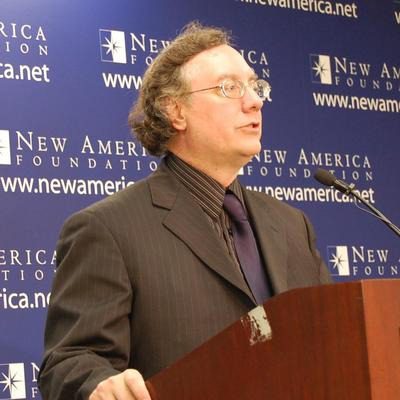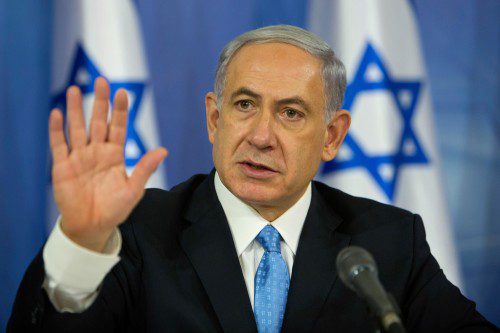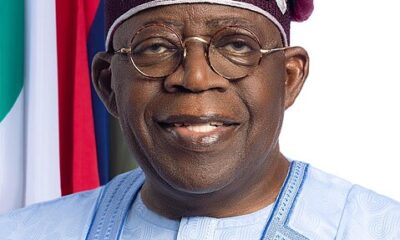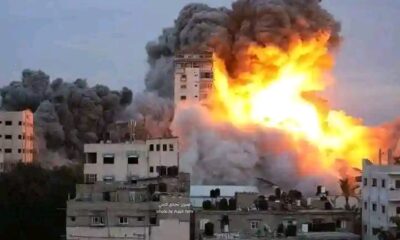Global Issues
How America helped create the Islamic State -By Juan Cole

Did the George W. Bush administration’s invasion of Iraq in 2003 lead to our current crisis over the Islamic State?
The question has been posed baldly in this campaign season, as when a young woman at a campaign rally said to the Republican aspirant, Jeb Bush, (using an alternate name for the militant group), “Your brother created ISIL.” It was not so much the invasion itself, however, as the policies implemented afterwards that are mainly to blame for Iraq and Syria lying in pieces. What President George W. Bush’s administration did was to foster sectarian divisions and create a long-lasting insurgency.
At every point along the way, the Bush administration made choices that exacerbated sectarian tensions in Iraq and set the country on the path to break-up. The assertion by some observers that the country is riven by age-old hatreds, is ahistorical and incorrect. In previous decades, political passions centred on anti-colonialism or big landlordism and socialism. The vacuum of power created by the US dissolution of the secular Baath Party encouraged Iraqi politicians to play on sectarian passions in unprecedented ways. Provoking a violent insurgency was likewise fateful. Once an insurgency comes into being, it typically does not subside for 10 to 15 years.
But Americans have difficulty recognising their own culpability in the rise of the Islamic State for two reasons. First, the public (and the press) seldom understood or credited Iraqi social forces with the ability to act independently, focusing instead on the US military’s campaigns. Second, Iraq became a football in partisan bickering, with dispassionate analyses abandoned for unsubstantiated blame games.
After the 2003 invasion, the Bush administration officials deliberately pushed aside Iraq’s Sunni Arabs, who had dominated Saddam Hussein’s regime, and favoured a clique of Shiite operatives. The main vehicle of politics in Iraq, the secular-minded but sanguinary Baath Party, which ruled 1968 to 2003, was dissolved. Shiite Bush allies like the late Ahmad Chalabi and Nouri al-Maliki (who would serve as prime minister from 2006 until 2014) formed a “Debaathification Commission” that fired close to 100,000 Sunni Arabs from government jobs, even from teaching school. This was at a time when there were no private sector jobs. Shiite Baathists went largely untouched.
Bush’s viceroy, Paul Bremer, a militant free-marketeer, at the same time dissolved most state-owned factories and threw the economy into a tailspin. Then, Bremer dissolved the vaunted Iraqi million-man army, sending officers and troops away with no pensions and no prospects. Unemployment swept the Sunni Arab provinces the way bubonic plague swept medieval Europe. Idleness reached levels of 70 per cent in Sunni Arab areas where insurgencies grew up. In contrast, the Shiite cliques the Americans brought to power made sure to get jobs for their coreligionists in the new government. The Bush administration and its Iraqi allies did everything the opposite of the way Nelson Mandela handled national reconciliation in post-apartheid South Africa. They also got the opposite outcome.
The administration’s vindictive targeting of Fallujah after four security contractors were killed in spring of 2004 reduced a proud city to rubble by the following late autumn and alienated Sunni Arabs in other cities, who refused to vote in the January 2005 elections. The resulting parliament was Shiite-dominated, and charged with crafting the constitution, a constitution all the Sunni-majority provinces rejected.
The mistreatment of the Iraqi Sunni Arabs drove many of them into guerrilla war against the US. Some 50 major cells emerged in the Sunni-majority provinces. One of these, al-Qaeda in Mesopotamia, was led by Abu Musaab al-Zarqawi, a Jordanian former car thief. It attracted not only the religious-minded Sunnis who perceived a growing joint US-Iran domination of Iraq, but also former Baath officers who knew where Saddam Hussein’s hidden arms depots were located.
After al-Zarqawi was killed in 2006 by an American airstrike, Iraqis took over the leadership of al-Qaeda in Mesopotamia. They created the so-called Islamic State in Iraq, which began holding swaths of territory. Many of the leaders of this group were former Baathist military officers, and some met and networked in Camp Bucca, where the US warehoused 25,000 suspected insurgents. It is unlikely that these Baathists sincerely embraced Muslim fundamentalism, and many are likely using the Islamic State group in a cynical way to garner public support (an al-Qaeda emissary, after meeting with them, called them “phoney snakes” betraying the real jihad).
When, in 2011, Syrian dictator, Bashar al-Assad, attacked the youth revolution against him militarily and turned it into a violent insurgency, Islamic State fighters went off to Syria to fight the remaining Baath regime. The militant group’s leader, Abu Bakr al-Baghdadi, authorised a Syrian branch in 2012, the Support Front (Jabhat al-Nusra). It was manned in part by veteran holy warriors of the Iraq and Afghanistan wars, including Syrians who had fought alongside al-Zarqawi. But over time, the Islamic State itself engaged in major operations over in Syria. It soon became apparent that the group is opportunistic: It would let other rebels do the hard fighting against the Syrian army and take territory. The Islamic State, however, would then sweep in and steal that territory away from its putative allies. In 2013, when the organisation sought to absorb the Support Front into itself, al-Qaeda leader, Ayman al-Zawahiri, one of the planners of the 9/11 attacks, ordered Syrian al-Qaeda to break with the Islamic State, which he kicked out of his organisation.
The Shiite religious parties that had come to power in Baghdad under American rule were continuing to exclude the Sunnis. The Iraqi military came to be dominated by ex-members of Shiite militias, such as the Badr Corps originally founded among expatriates in Iran. In 2011, when youth protests broke out in Mosul and Fallujah, al-Maliki ordered them brutally repressed, ending any hope the Sunnis had for political reform and inclusion. Having taken rural al-Raqqa province in Syria in 2013 and 2014, Daesh began intriguing with Sunni urban elite back in Iraq, in cities such as Mosul.
In June 2014, the world was startled when Sunni Mosul rose up against the largely Shiite Iraqi army. Crowds attacked police and troops and paved the way for the Islamic State fighters to come into the city from Syria. Local Sunni Arab elite, sick of being marginalised and humiliated by Shiite Baghdad, decided they would risk an alliance with the Islamic State. The corrupt Iraqi Army could have held Mosul by simply standing firm. Both officers and their men ran away and delivered it into the hands of the militant group, which later extended its sway to 40 per cent of Iraqi territory (but only perhaps 10 per cent of its population).
Had the US put its full effort into rolling up al-Qaeda in Afghanistan, instead of slighting that theatre in favour of concentrating on Iraq, the organisation might have been effectively destroyed in 2001 and 2002. Instead, by occupying Iraq, the Bush administration gave a whole new generation of angry young men a cause to fight in and bestowed on al-Qaeda a new lease of life. Had the Bush administration not destroyed the Iraqi state and its army, these local institutions could have forestalled the rise of an al-Qaeda insurgency.
Cole is Richard P. Mitchell collegiate professor of history at the University of Michigan
Culled from Washington Post


















